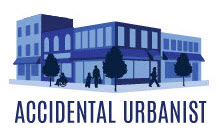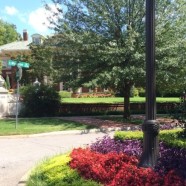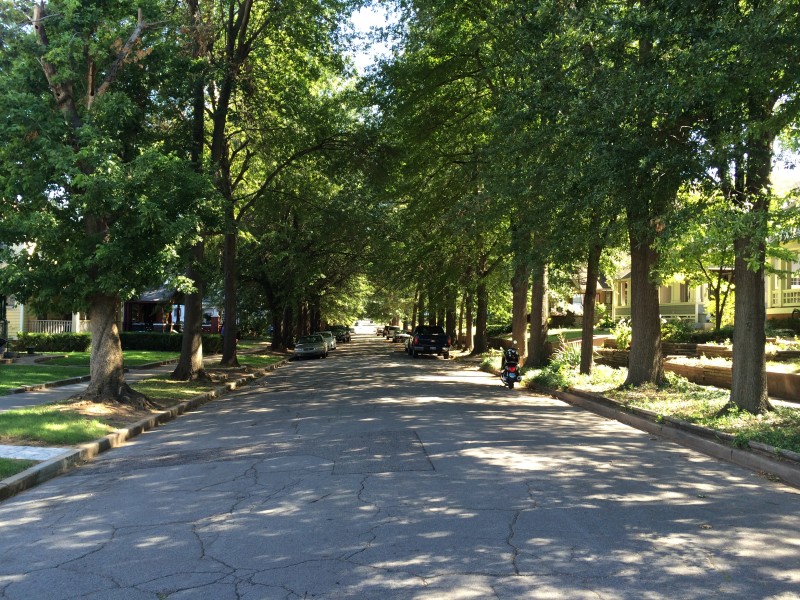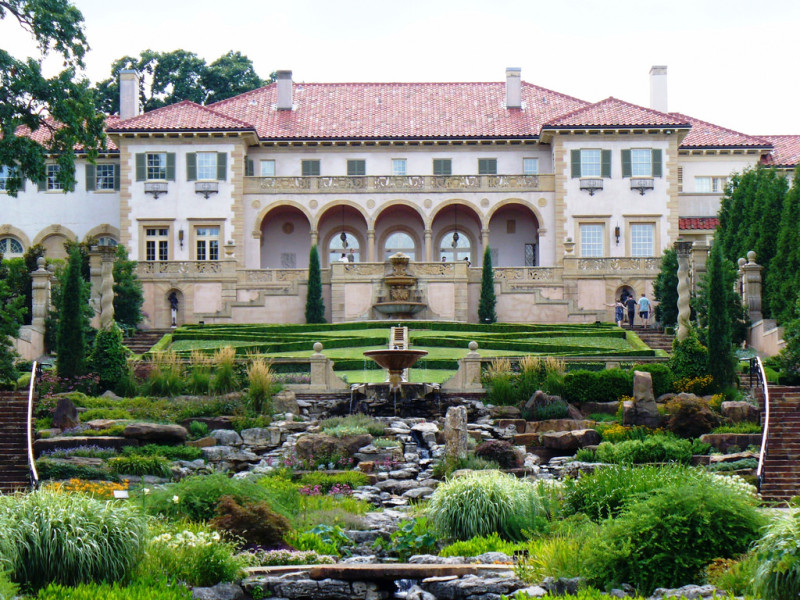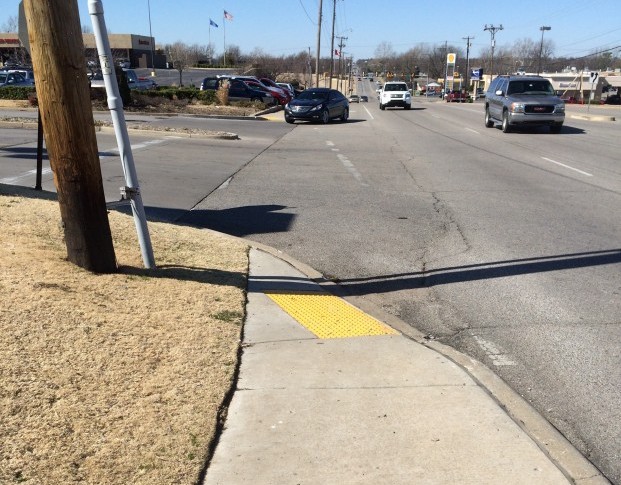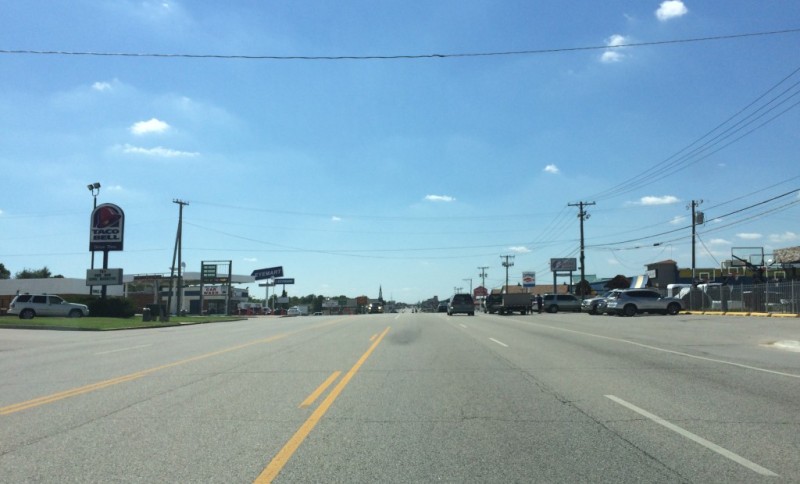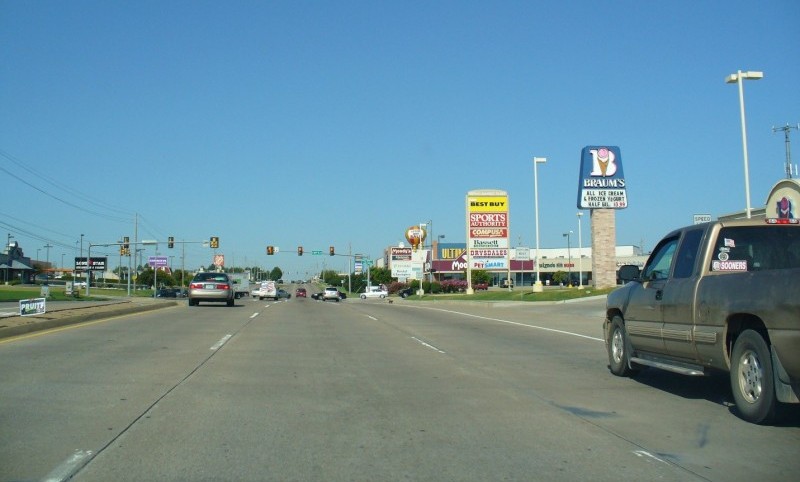Where Every Citizen’s Heart Can Sing
As you go about your day, what do you see?
Are you fortunate enough to live on a tree-lined street, surrounded by charming architecture and manicured yards?
Can you walk to the store along interesting sidewalks where flower beds, public art, and street trees add to the delight of window shopping along your path?
Does your daily life bring you in contact with natural beauty such as oceans, scenic rivers or mountains?
If so, cheers to you.
For most folks, these experiences aren’t part of day-to-day life. They occur only on vacation, where we seek out the most lovable and beautiful destinations during a couple weeks out of the year. Of course, that’s if you’re lucky enough to swing a vacation at all. Many Americans don’t have that luxury. A full 42% of us did not take a single day of vacation in 2014. When a weekend “staycation” is all you get, the quality of your city has a dramatic impact on your quality of life.
A recent jaunt across town has me thinking about what we love (and will travel to experience) versus what we create.
I’ve been thinking about what it means to cut funding for parks to pay for cops and new road construction. What it means when you widen streets, but fail to build sidewalks in neighborhoods where car ownership is a luxury. More than anything, I’ve been pondering the words of Joe Riley, former mayor of Charleston, S.C., and his thoughts on beauty, equality and the public realm:
“Beauty has no economic litmus test. It’s a basic human need and instinct.”
Can anyone dispute that? And yet, for far too many of our citizens, the public realm is defined by crass consumerism and the lowest common denominator of construction materials and techniques.
Like many cities, Tulsa has its gorgeous neighborhoods and grand destinations. Stately mansions built by oil barons, world-class architecture downtown, the gardens at Philbrook Museum, miles of trails along the Arkansas River, and a shining Cesar Pelli-designed arena are among the places that are proudly displayed on postcards and convention bureau publications.
But what about the people who don’t live in historic neighborhoods, or have time to visit art museums, or can’t spare an extra $100 for a concert? What do we build for them?
The vast majority of our public investment in the built environment seems to satisfy only our most pragmatic needs, like patching potholes, widening roads, and updating water/sewer lines—leaving little room for beauty or grace. And while Tulsa is lucky enough to have a “1% for art” ordinance, requiring one percent of all construction costs for public facilities to be dedicated to art, this does not include road projects, where a majority of our tax dollars are spent.
But even with so much of our treasury going to transportation, our streets are not delightful. They are designed for high-speed auto travel, maximum capacity, and the turn-radius of trucks. Our street engineers are not tasked with considering the feelings of “a mother walking down the street, holding her child’s hand”—something that Mayor Riley believes should be the essence of urban design.
Instead we operate in silos. We have vision documents and neighborhood plans showing where people want to see revitalization and walkable “main streets.” We have a zoning map that was never updated to reflect that vision. We have private developers looking to maximize profits, regardless of the adopted long-range plans. And we have city engineers designing city streets to highway standards, which is exactly the opposite of what you need to create the human-scaled, walkable destinations people crave.
When I talk to folks from around the country, I get the feeling that we’re not alone. Getting everybody on the same boat, rowing in the same direction can be a challenge.
Here in Tulsa, I can’t help noticing that we’ve missed the boat in another way. When I think about cities, I’m reminded that the built environment is transformed one project and one building at a time. Over decades, cities evolve and are reborn. To repair past mistakes, it’s necessary to reinvest in older areas, always moving in the direction of a better vision, and a better quality of life for our citizens.
Thanks to an unfortunate state law, however, Tulsa depends almost entirely upon sales taxes for municipal funding. Our craving for “new” tax dollars combined with cheap land has resulted in a misguided 50-year habit of continuous greenfield development. As we have pushed new development further and further towards the south, we have often ignored the vast opportunities for re-development available much closer to the city center.
A WEIRD SORT OF MANIFEST DESTINY
As a result, new developments on the far fringes of the city include improved landscaping, buried utilities and complete sidewalks: everything that would make walking lovely, if only they weren’t designed on a scale suitable only for cars. In older areas, where adjacent neighborhoods have connected street grids and many people walk or use transit, outdated commercial and industrial areas often lack the very amenities that give dignity and beauty to people on foot.
And while we continue to incentivize millions in private investment on the fringes, much of the public realm at the heart of our city suffers. Beautifying and improving existing areas with public funding is difficult. Money’s tight. People who have to dodge potholes on their way to work tend to be less sympathetic to spending precious resources on sidewalks, street trees, benches and planters. And there are always those who argue that “niceties” are not the role of government, and that taxes should only be spent on the bare necessities.
I tend to side with Mayor Riley, who has exactly the opposite view:
“There is no excuse for anything to ever be built that does not add to the beauty of a city. Every investment in beauty yields an economic payoff. If you build beautiful places — whether they are parks, parking garages, or public housing — the land next to these places becomes more successful. They become catalytic agents to generate economic activity.”
If, as Riley says, “the public realm is the part of our city that belongs to all of us, that gives us our identity,” we’re living in a very sad time. Because most of what we build looks like this:
Which brings us back to the folks who won’t get to go on vacation any day soon. During a presentation at CNU in Detroit, Riley reflected on the role of the built environment: “We have citizens who, that’s all they’ve got. They aren’t going to go to Paris or Rome on vacation.” So we should build places where, every day, even the least among us, “can clothe themselves with peace and beauty.”
His comments have stuck with me since that day. It’s the kind of statement you can never un-hear. It’s an idea that soaks into you, and changes the way you look at the world.
What if our goal wasn’t to build the most stuff in the shortest amount of time for the least amount of money? What if, instead, our goal was to create places of lasting beauty where, every day, our souls could be nourished by our surroundings?
What if, instead of volume, we focused on quality? Instead of working to bring new national chains, what if we worked to make every existing block a better place for our citizens? What if we took the millions we spend to widen roads for people with cars, and instead invested that money in making every street a place for all. What if we truly worked to make our city “a place where every citizen’s heart can sing?”
A girl can dream, right?
by Sarah Kobos
Read More